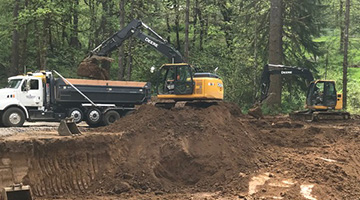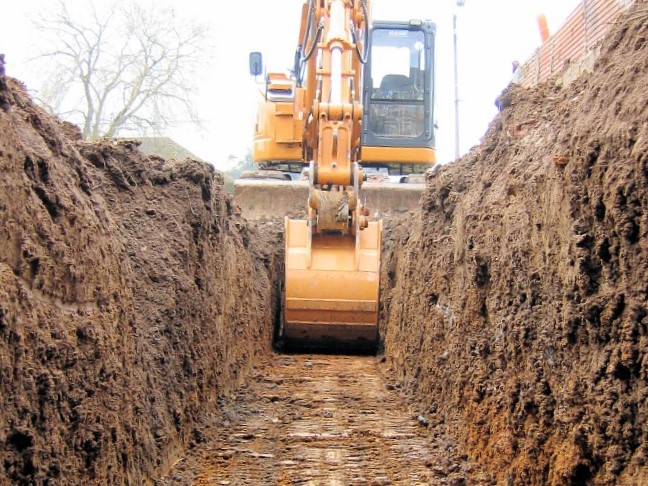Septic Ohio - Comprehensive Septic System Solutions in Ohio
Septic Ohio - Comprehensive Septic System Solutions in Ohio
Blog Article
Thorough Expedition: The Scientific Research Behind Superior Excavation Practices
From ancient hand devices to modern-day hydraulic excavators, the advancement of excavation methods has been a testimony to human ingenuity and technical innovations. What genuinely sets exceptional excavation practices apart is a deep understanding of geological concepts, combined with the utilization of cutting-edge devices and approaches.
Evolution of Excavation Techniques
Throughout background, the advancement of excavation methods has played a crucial duty ahead of time building and construction practices and historical explorations. From the simple tools utilized by our ancestors to the innovative machinery used in contemporary times, the development of excavation techniques has dramatically transformed how we come close to various jobs.
In old times, manual labor with fundamental tools such as wheelbarrows, pickaxes, and shovels was the key method of excavation. This labor-intensive procedure limited the depth and extent of excavations, frequently causing slow-moving progress and limited access to particular sites. As civilizations progressed, so did the techniques and devices used for excavation.
The Industrial Change noted a transforming factor in excavation techniques with the intro of steam-powered equipment. In modern times, modern technology plays a pivotal role in excavation, with improvements like General practitioner systems, drones, and 3D scanning enhancing precision and effectiveness in the area.
Function of Technology in Excavation

The assimilation of cutting-edge modern technology has fundamentally changed the area of excavation, boosting precision and effectiveness to unprecedented levels. One of the essential technical innovations that has actually considerably affected excavation practices is the utilization of GPS systems. These systems permit specific mapping of excavation websites, making it possible for operators to accurately find below ground utilities and frameworks. Furthermore, using telematics in excavation devices has actually enabled real-time tracking of maker efficiency, leading to aggressive maintenance and raised operational efficiency.
Additionally, the arrival of 3D modeling and simulation software has streamlined the preparation process for excavation jobs. Designers and operators can currently envision the entire excavation procedure before breaking ground, optimizing and recognizing prospective obstacles operations. Combined with this, the application of drones in excavation tasks has promoted aerial studies, volumetric measurements, and website examinations with unparalleled rate and precision.
Geological Concepts in Excavation
An understanding of geological concepts is vital for guaranteeing the structural integrity and stability of excavation sites. Geological factors play a critical duty in identifying the feasibility and safety and security of excavation jobs.
In addition, the geological framework of the area, consisting of faults, cracks, and rock formations, must be meticulously analyzed to identify possible risks and difficulties. Excavating near mistake lines or unpredictable rock formations can lead to instability and potential dangers. By carrying out comprehensive geological studies and analysis, designers and excavators can establish techniques to mitigate dangers and make certain the successful conclusion of excavation projects. Eventually, including geological concepts right into excavation practices is essential for accomplishing secure, effective, and lasting outcomes.

Most Current Devices for Excavation
In the realm of excavation methods, contemporary developments in tools have revolutionized the effectiveness and precision of excavation procedures. One of the latest tools making waves in the market is making use of drones outfitted with innovative imaging modern technology. These drones can provide detailed airborne studies of excavation sites, offering real-time information on topography and possible dangers. This info aids in far better additional reading preparation and decision-making during the excavation process.
An additional cutting-edge tool getting popularity is the execution of 3D printing technology for developing custom-made excavation equipment. This permits the manufacturing of specialized tools that are customized to the particular needs of a project, boosting effectiveness and lowering downtime.
In addition, innovations in materials scientific research have caused the development of more powerful and much more sturdy excavation tools. lancaster trenching. Tungsten carbide-tipped excavator attachments, as an example, deal exceptional efficiency in challenging ground conditions, boosting efficiency on-site
Scientific research's Effect on Excavation Practices

Furthermore, developments in products scientific research have led to the production of stronger, more sturdy excavation tools and equipment. As an example, the usage of composite materials in shovels and miners has actually improved their performance and durability, ultimately increasing performance on excavation sites. In addition, scientific study on soil auto mechanics and geotechnical engineering has offered beneficial insights right into soil habits, look these up permitting excavation experts to make educated choices relating to excavation methods and soil stablizing techniques. Generally, science continues to drive advancement and renovation in excavation practices, making excavation projects a lot more efficient, cost-effective, and sustainable.

Verdict
In verdict, the advancement of excavation methods has been greatly affected by innovations in modern technology and a much deeper understanding of geological concepts. The newest tools and tools utilized in excavation have boosted performance and precision in the area. The application of clinical expertise has actually dramatically improved excavation practices, bring about extra lasting and reliable techniques for digging deep into numerous kinds of materials.
In the realm of excavation practices, modern technologies in devices have transformed the efficiency and accuracy of excavation processes. By leveraging scientific principles, the excavation sector has actually been able to considerably improve effectiveness, accuracy, and safety in excavation procedures. GPR enables excavation teams to non-invasively check and map subsurface frameworks, utilities, and potential hazards, allowing them to prepare excavation projects with better precision and reduced threat of mishaps.
Additionally, clinical study on soil mechanics and geotechnical design has provided valuable understandings right into dirt behavior, permitting excavation professionals to make enlightened choices regarding excavation approaches and soil stabilization strategies. Overall, scientific research continues to drive technology and enhancement in excavation methods, making excavation projects extra efficient, economical, and sustainable.
Report this page